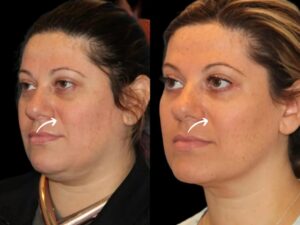
Choosing the right pickleball paddle is more than just picking a pretty racket—it’s a critical decision that impacts control, power, placement, comfort, and your overall performance on the court. Whether you’re a beginner learning the basics or an experienced player refining strategy, finding your perfect match can transform your gameplay. In this in-depth guide, we’ll walk through every key consideration—and show how My Pickle Drop elevates the process with expert advice, paddle reviews, and complementary content.
1. Why the Right Paddle Matters
Before diving into specs and brands, understand this: the paddle you choose can dramatically affect your shot accuracy, speed, fatigue, injury risk, and even your confidence. A paddle that’s too heavy might tire your arm, while one that’s too light could reduce drive or control. At My Pickle Drop, we believe in empowering players with knowledge—our guides, like the Pickleball Paddle Buying Guide, are designed to help you make informed decisions tailored to your play style and goals.
2. Paddle Weight: Balance Power and Control
Paddle weight is one of the most critical specs for player comfort and playability:
-
Lightweight paddles (6.7 – 7.2 oz) deliver superior maneuverability—ideal for quick wrist movements, extended rallies, and finesse shots like dinks. Great for players focused on control and touch near the net.
-
Midweight paddles (7.3 – 8.2 oz) offer the best all-around balance of power and control. They’re versatile and comfortable for most players and styles.
-
Heavyweight paddles (8.3 – 9+ oz) deliver heft and pop for strong drives, serves, and overhead shots. But they can lead to fatigue or elbow issues if overused.
At My Pickle Drop, we recommend starting in the midweight range unless you’ve developed a clear preference. Pay attention to balance too—some paddles are head-heavy for power, others more even.
3. Paddle Material and Core: What’s Inside Matters
Pickleball paddle construction typically involves two key components: the core and the face material.
Core Materials
-
Polymer cores (closed-cell) are quiet, soft, and offer good control—perfect for dinking, precision, and spot placement.
-
Nomex cores (paper honeycomb) are rigid, loud, and deliver power—but less forgiving on the arms.
-
Aluminum cores provide medium stiffness and a unique feel; somewhere between polymer and Nomex.
Face Materials
-
Fiberglass faces add pop and power, while maintaining a bit of forgiveness.
-
Carbon fiber/graphite faces are lightweight, offer excellent control, and deliver a consistent feel.
-
Composite faces can vary—sometimes combining fiberglass and carbon for a hybrid feel.
For insight into surface materials and how they shape play style, check out detailed comparisons at My Pickle Drop’s Pickleball Paddle Buying Guide.
4. Grip Size and Shape: Fit is Everything
Improper grip size can lead to discomfort or injury. Standard pickleball grip circumferences range from 4 to 4.5 inches—smaller hands need smaller grips, larger hands need bigger ones. A grip that’s too large can reduce wrist action; too small might force tight holding and fatigue.
Most paddles offer wrap-style or cushioned grips. Beginners and recreational players might find thicker grips more comfortable, while advanced players often prefer thinner ones for finesse. My Pickle Drop offers suggestions for grip customization and sizes in their gear reviews.
5. Paddle Shape and Sweet Spot
Shape affects sweet spot size and reach. Longer paddles give more reach and leverage—helpful for overheads and volleys—but can lack maneuverability. Wide-bodied paddles offer bigger sweet spots for consistent contact.
If you’re unsure, mid-size shapes offer great all-around performance. Premium shapes (teardrop, widebody, elongated) suit specific play styles explored further in gear posts like those featured on My Pickle Drop.
6. Series and Price Points: Paddle Tiers
Paddle pricing varies significantly depending on core, face material, brand reputation, and weight. Here’s a rough breakdown:
-
Entry-level (< $80): Polymer core with fiberglass face. Great for beginners focused on consistent performance without overspending.
-
Mid-range ($80–$150): Polymer or composite core with fiberglass/carbon face. Excellent for players who want better responsiveness, improved control and touch.
-
Premium level ($150–$300+): Carbon fiber, specialized core materials, edge guard innovations. Designed for competitive players who demand precise feel, spin control, and durability.
See examples and honest reviews of paddles across price tiers at My Pickle Drop’s product summaries, including the Head Boom Tour Paddle Review.
7. Testing and Where to Buy
The best way to find your ideal paddle is to test a few. Local clubs, demo clinics, or store events often let you try several paddles before buying. Note how each feels during serves, volleys, groundstrokes, and long rallies.
When shopping online, My Pickle Drop recommends purchasing from reputable retailers that offer good return policies—so you can switch if it’s not the right fit.
8. Matching Your Play Style
Your playing style influences what paddle suits you best:
-
Control players (dinks, precise placement): lean toward lighter paddles with polymer cores and thin grips.
-
Power players (smashes, drives): gravitate toward mid‑weight or heavier paddles, preferably with Nomex or carbon fiber faces.
-
All-rounders: mid‑weight, balanced paddles offering both control and pop.
To build context on how paddle selection ties into strategy, check out My Pickle Drop’s articles like how to serve in pickleball and pickleball scoring guide.
9. Brand and Model Considerations
Does brand matter? In large part, yes—because consistency, customer support, and reliability vary. At My Pickle Drop, we test and review multiple paddles to help you choose from trusted brands and new innovators alike.
Some paddles, like the Head Boom Tour series, stand out for specific traits—the Head Boom Tour Paddle Review explores spin control, grip ergonomics, and durability metrics.
10. Customization: Edge Guards, Overgrips, Lead Tape
Small upgrades can dramatically improve paddle feel:
-
Edge guards protect edges at cost of a tiny bit of weight.
-
Overgrips let you fine-tune grip thickness for maximum comfort.
-
Lead or vibration tape let you adjust balance and swing weight according to your needs.
My Pickle Drop shares gear guides and video walkthroughs showing how to make these custom tweaks.
11. Break-In Period & Longevity
New paddles sometimes feel stiff initially. Give yourself a break-in period of several matches before passing final judgment. Watch out for face wear or edge damage.
Durability is especially important if you play frequently—premium paddles may cost more, but they often last longer and maintain performance. Reviews on My Pickle Drop emphasize longevity and warranty terms.
12. Top 5 Beginner-Friendly Paddle Picks
Here are some paddle models friendly to beginners, balancing price, comfort, and performance:
-
Polymer-core paddle with fiberglass face (~$70–$90): forgiving and control-oriented.
-
Mid-weight carbon paddle (~$120): comfort and added pop, ideal for developing all-around play.
-
Wide-body polymer paddle: large sweet spot and good spin potential.
-
Lightweight graphite paddle (~7.5 oz): great maneuverability and touch.
-
Pre-assembled overgrip bundle with adjustable lead tape option for grip experimentation.
Specific model details and performance comparisons are available in the Pickleball Paddle Buying Guide on My Pickle Drop.
13. Pairing Paddle Choice with Training
A deliberate paddle fits well with technical training. For example:
-
Practice dinks and soft drops with a paddle that emphasizes control.
-
Serve practice is useful—check the article about serving in pickleball to improve pace, placement, and consistency.
-
Keep awareness of score and strategy to maximize tactical play—be sure to browse My Pickle Drop’s scoring guide to pair paddle use with optimal tactics.
14. Pairing Paddle with Team Identity
If you play with a team, a paddle that fits your style also becomes part of your identity. Inspired by content like Pickleball Team Names generated at My Pickle Drop’s team names blog, your paddle can reflect your squad’s personality. Knowing your play style and paddle traits can influence team branding, chemistry, and confidence.
15. Final Checklist for Choosing Your Perfect Paddle
| Step | What to Consider |
|---|---|
| 1. Set your budget | Decide entry, mid, or premium range. |
| 2. Test different weights | Light for control, heavier for power. |
| 3. Examine core & face | Polymer = control, Nomex = power. |
| 4. Match grip size | Fit hand comfortably, allow wrist play. |
| 5. Evaluate sweet spot & shape | Bigger sweet spot for consistency. |
| 6. Review pros/cons of brands | Use trusted reviews like on My Pickle Drop. |
| 7. Customize (optional) | Adjust edge guard, overgrip, tape. |
| 8. Play and assess | Allow for a break-in period before judging. |
16. Why My Pickle Drop Is Your Go-To Resource
My Pickle Drop stands out not only for selling gear, but for providing educational resources, honest reviews, and contextual content—such as:
-
The Pickleball Paddle Buying Guide that lays out specs in approachable language.
-
The Head Boom Tour Paddle Review offering hands-on evaluation and comparison.
-
Strategy-focused posts like serving tips and scoring mechanics which help you use your paddle more effectively.
-
Fun, community-oriented posts like Team Name ideas that connect paddle selection to play style and identity.
Whether you’re selecting your first paddle or upgrading on a performance plateau, My Pickle Drop supports you with a full-circle approach: gear, guide, strategy, and community.
Conclusion
The ideal pickleball paddle isn’t defined by brand alone—it’s a thoughtful combination of weight, material, grip, shape, and personal play style. My Pickle Drop ensures you have all the tools and information needed to pick wisely. Use their blog posts on serving, scoring, team identity, and paddle reviews to round out your technical and strategic understanding. Test options, trust your feel, and don’t shy away from small custom tweaks.
With the right paddle in your hand, matched to your game cadence, comfort preferences, and control needs, you’ll not only play well—you’ll play smart. Let My Pickle Drop guide the journey to performance and pleasure on the pickleball court.



